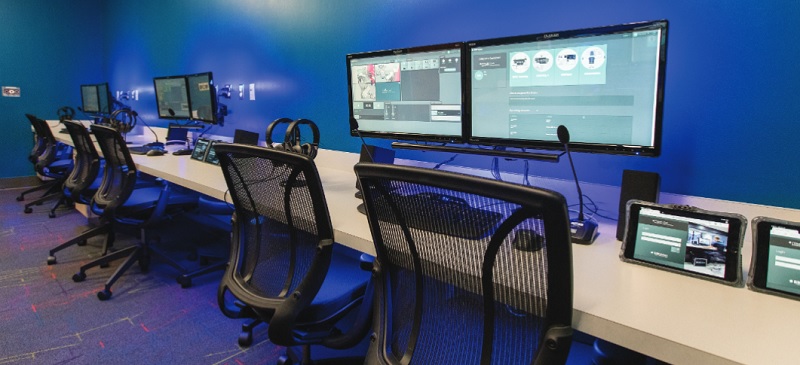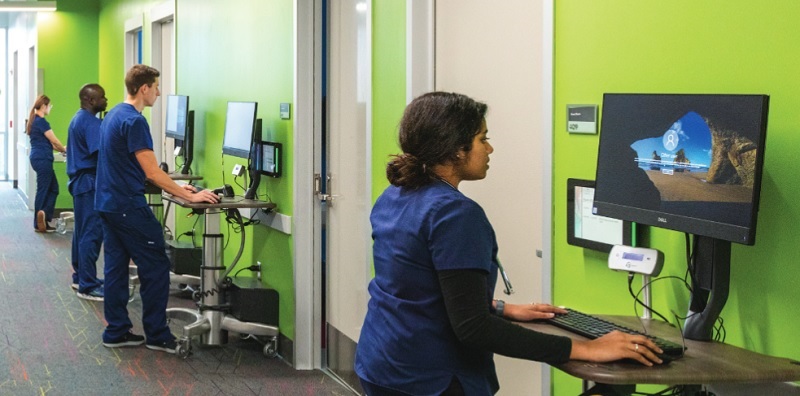Since its founding in 1972, the Cizik School of Nursing at UT Health in Houston has prided itself on helping high-achieving nursing students learn, discover, and practice. They recently teamed with Level 3 Audiovisual to complete the largest simulation center within the UT Health network, as well as the integration firm’s largest simulation project.
The new health simulation center has a total of 70 cameras and over 120 audio devices networked across 5 control stations, 14 OSCE exam rooms, 16 simulation training rooms, 4 dedicated debriefing spaces, and 1 debriefing station located in the director’s office.
UT’s Specific Technical Needs
One major challenge of the project was the degree to which UT Health secured their IT infrastructure. All computer sources were required to be racked and terminated within their data center several miles off campus.
Many health simulation center projects require a software vendor, an AV vendor, a simulation consultant, and even an IT vendor.
But UT wanted a single technology vendor who specializes in simulation to provide a complete solution.
There were also numerous criteria set by the client related to HIPPA, FERPA, hospital firewall structure, and IT infrastructure security.
16 Simulation & 14 OSCE Rooms
Each simulation room and OSCE is fitted with two PTZ cameras and one fixed zoom camera. All simulation rooms are equipped with a hidden PC driving a media screen displaying information and lab results crucial to the simulation.
Each room is also fitted with an amplifier driving a VOG speaker, and a ceiling microphone recording the room’s sound.
Related: The Response to COVID-19: Healthcare Command Centers
Wireless devices support each room with either a headset/microphone recording audio or an in-ear receiver allowing private conversation from a trainer to an actor in the room. Additionally, each simulation room is equipped with a patient monitor displaying vital signs and overall health and status of the patient.
5 Control Stations
The simulation lab is fitted with a room containing five control stations with dual monitors and headphones. Each control station can run a multi-room type simulation or log into single-room simulations.
The operator can talk to the entire room (via VOG) or privately to a trainer or actor in the room. The operator can display information on the simulation/OSCE room’s media screens, utilize a tablet to annotate the live simulation recording, bookmark individual events and/or track the performance via checklists.
Both annotations and checklists can be used later during debriefing to jump to specific points in the simulation recording.
4 Debriefing Rooms
Each debriefing room is equipped with a player-PC allowing the debriefing to be remotely controlled via a tablet. The player-PC’s drive 4K displays and speakers are used to playback simulation recordings.
Each debriefing room is equipped with one PTZ camera and one ceiling microphone.
Impact on the Center
Nena Fairbanks, Administrative Manager at UT Health, says she was surprised by how intuitive the software program turned out.
“I was in the bidding process and saw other softwares and this is one of the main reasons we chose it because this system is very easy to use and knowing that our employees can be trained within 20 minutes and know how to do their job is phenomenal.”
Equipment Highlights:
- Audio Technica ceiling mics
- Axis PTZ & fixed network cameras
- Crestron control & presentation systems
- Various Shure mics












